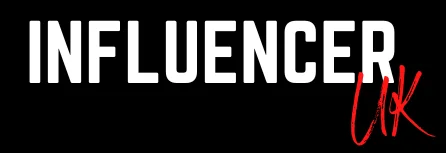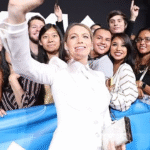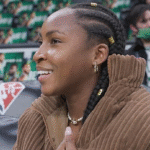LinkedIn, the world’s most popular platform for professionals, is making a big move into the world of video advertising. The company, which is owned by Microsoft, has decided to focus more on video content in order to attract businesses, creators, and advertisers from around the world. The main idea is simple: people today watch more videos than ever before, and businesses want to connect with those viewers. By growing its video ads and allowing creators to join in, LinkedIn hopes to turn into not just a place to find jobs and connect with professionals, but also a powerful platform where businesses can advertise through engaging video stories.
The company announced that it has partnered with some very big names to sponsor new video shows. AT&T Business, IBM, SAP, and ServiceNow are among the first sponsors who will support LinkedIn’s new video series. These companies will back the first season of four different video programs. This is all part of LinkedIn’s “BrandLink” program, which the company has been working on for some time. The program was originally started last year under another name, the “Wire Program,” which focused mainly on publishers. But LinkedIn changed the program in May, expanding it so that creators — individuals who make content online — could also take part.

So what exactly does BrandLink do? It gives certain publishers and creators the chance to earn money by placing ads before their videos. This means that if you are a creator on LinkedIn and your content is chosen, short ads can run right before your videos, and you get a share of the money from those ads. This way, both LinkedIn and the creators benefit. It is quite similar to how YouTube or Instagram share money with creators who make popular videos.
Since its launch, BrandLink has grown quickly. LinkedIn shared that more than 70 publishers and creators have already joined the program. This is a big step forward because LinkedIn was once seen mainly as a “serious” platform where people went only to look for jobs or share work updates. But now, the company is encouraging creators to bring new ideas, stories, and engaging content to the platform. In fact, LinkedIn said that the number of creators making content on the platform has nearly doubled since 2021. This shows that more and more people are starting to see LinkedIn as a place to not only build careers but also to share videos, advice, and even creative projects.
Another reason why LinkedIn is investing in video is because the use of video on the platform is growing fast. As of July, the number of video uploads on LinkedIn had risen more than 20%. People seem to enjoy sharing their experiences, business tips, and professional stories through video instead of just plain text. Videos feel more personal, and they allow professionals to connect in a deeper and more authentic way.
The bigger picture here is that LinkedIn is competing with other social media platforms. Apps like TikTok and Instagram have already shown how powerful video content can be. These platforms thrive because short, engaging videos attract attention and keep people scrolling. TikTok and Instagram also rely heavily on influencers and creators, who help brands reach millions of users through short videos. LinkedIn, while different in its audience, is trying to adapt a similar idea — but in a professional context.
Research also shows why this move makes sense. According to studies by firms like eMarketer, people often trust influencers more than traditional ads. If someone you follow and admire recommends a product or service, you are more likely to pay attention. On LinkedIn, where the audience is professional and business-minded, creators who share advice or expertise can also play this role of influencer. This trust factor could make video ads on LinkedIn much more effective for businesses.
For now, the plan is that creators and publishers on LinkedIn will post short videos as part of campaigns that last four to six months. Before these videos start, brands will be able to run quick ads, usually about 15 seconds long. Some brands will also get the chance to sponsor exclusive “Shows by LinkedIn.” These shows will not just have ads before the video starts, but also small branded messages or logos inside the content itself. This is another way for businesses to connect directly with viewers while keeping the videos interesting.
It is clear that LinkedIn wants to stand out by mixing professional networking with creative video storytelling. While TikTok or Instagram may focus more on entertainment, LinkedIn is hoping to bring business-focused stories, industry insights, and professional advice in video form. This creates a space where brands can reach people who are serious about their careers, but still want to consume content in a modern, engaging way.
The move is also part of LinkedIn’s larger growth strategy. The United States, the United Kingdom, and Germany are currently the countries leading LinkedIn’s global ad revenue. But with the rise of creators and new ad opportunities, the platform is aiming to grow much more worldwide. By bringing in more publishers and encouraging creator-led shows, LinkedIn is setting itself up as a unique advertising hub that blends professionalism with creativity.
This growth also reflects a larger change in how people use the internet. Not long ago, LinkedIn was mainly seen as a digital resume platform where people logged in only to update their CVs or look for jobs. Today, it has transformed into a lively space where professionals share achievements, opinions, and now even videos that can inspire and teach. With BrandLink, LinkedIn is taking another step to remain relevant and exciting for both users and advertisers.
In the end, the success of this video push will depend on whether users enjoy the content and whether brands see good results from advertising on the platform. If done right, LinkedIn could become more than just a networking site; it could become a major player in the world of video advertising, competing with giants like YouTube, Instagram, and TikTok — but with a professional twist.
LinkedIn’s bet on video shows how much the digital world is changing. People are no longer satisfied with only text updates or photos. They want video, they want connection, and they want authenticity. By embracing this, LinkedIn is hoping to write a new chapter in its story — one where creators, publishers, and businesses all grow together through the power of video.


